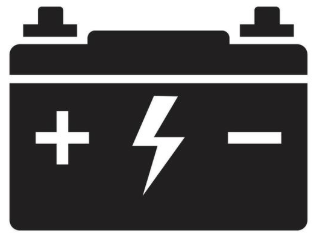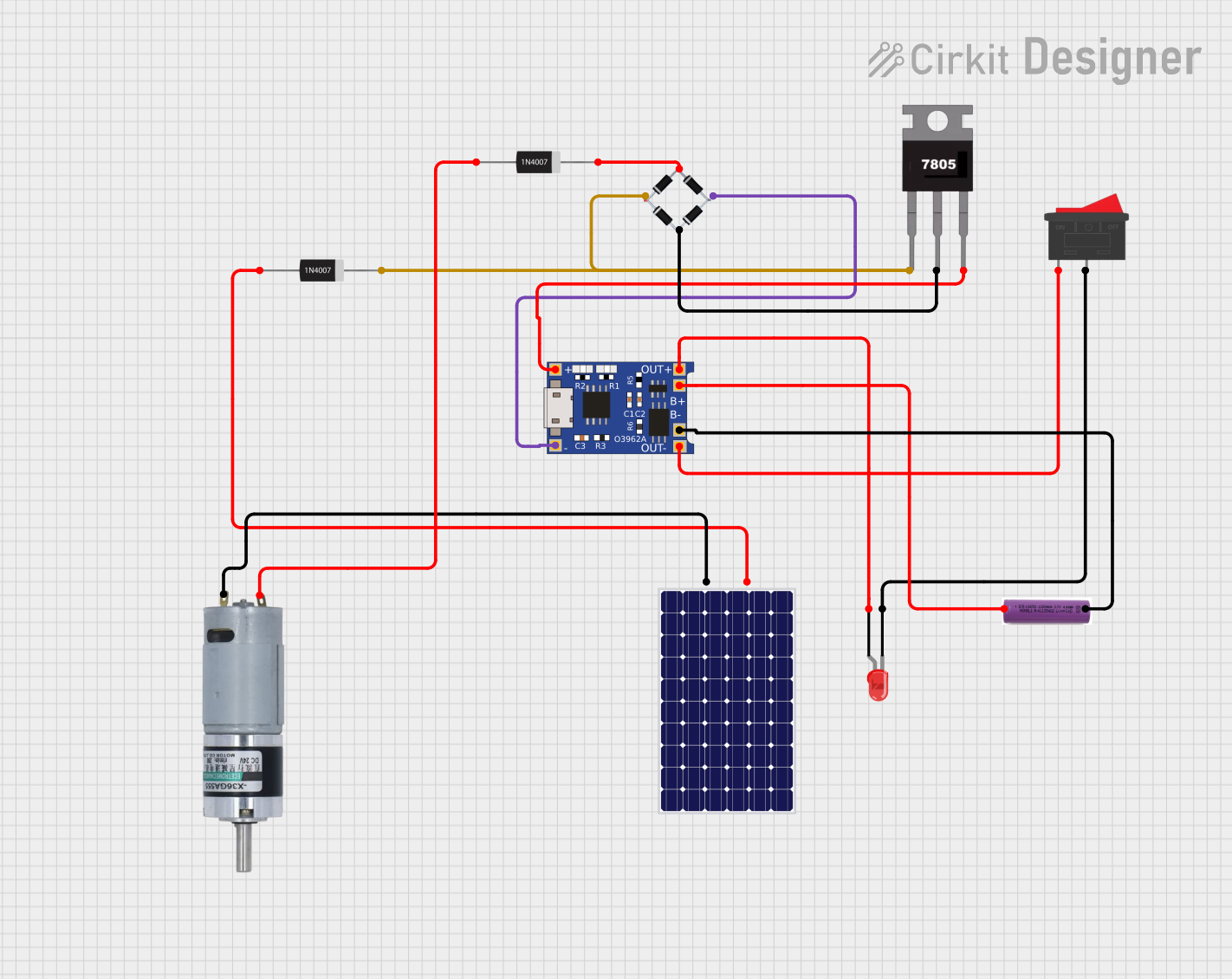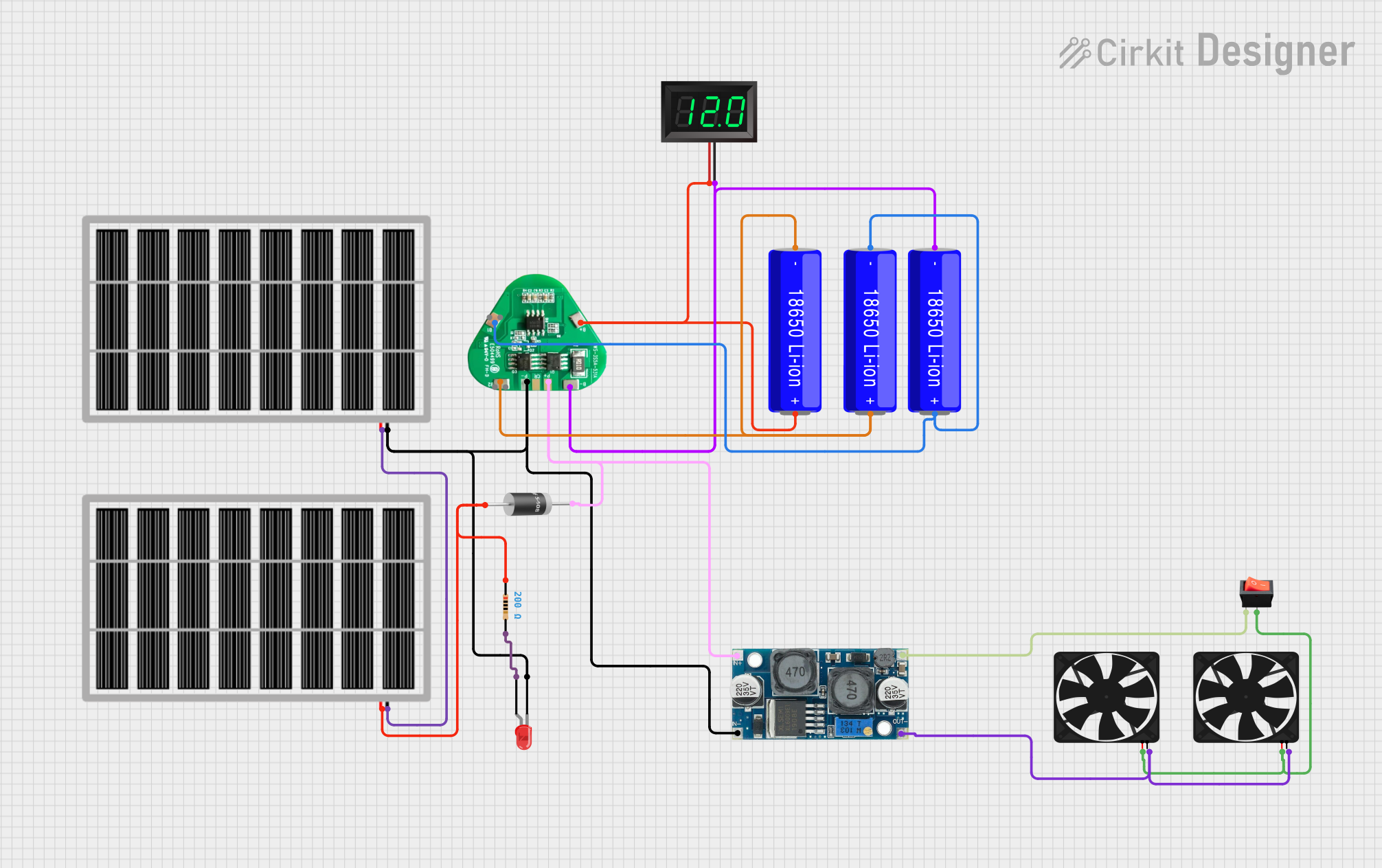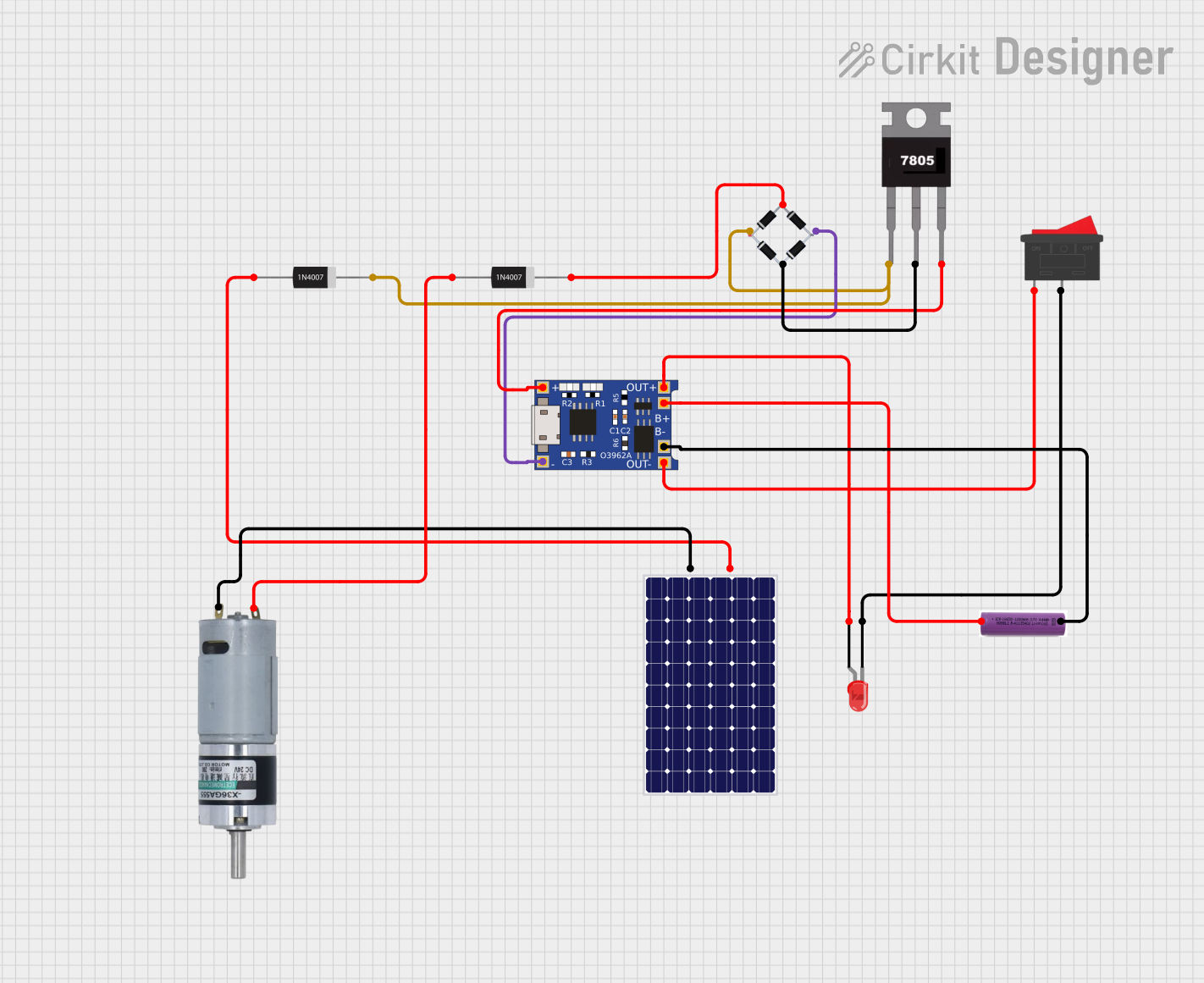
How to Use Battery: Examples, Pinouts, and Specs

 Design with Battery in Cirkit Designer
Design with Battery in Cirkit DesignerIntroduction
A battery is a device that stores electrical energy in chemical form and converts it into electrical energy to power electronic circuits. Batteries are essential components in a wide range of applications, from small portable devices to large-scale energy storage systems. They provide a reliable and portable source of power, making them indispensable in modern electronics.
Common applications and use cases include:
- Powering portable electronic devices such as smartphones, laptops, and cameras.
- Providing backup power for uninterruptible power supplies (UPS) and emergency systems.
- Supplying energy to electric vehicles and renewable energy systems.
- Supporting embedded systems and microcontroller-based projects.
Explore Projects Built with Battery

 Open Project in Cirkit Designer
Open Project in Cirkit Designer
 Open Project in Cirkit Designer
Open Project in Cirkit Designer
 Open Project in Cirkit Designer
Open Project in Cirkit Designer
 Open Project in Cirkit Designer
Open Project in Cirkit DesignerExplore Projects Built with Battery

 Open Project in Cirkit Designer
Open Project in Cirkit Designer
 Open Project in Cirkit Designer
Open Project in Cirkit Designer
 Open Project in Cirkit Designer
Open Project in Cirkit Designer
 Open Project in Cirkit Designer
Open Project in Cirkit DesignerTechnical Specifications
Below are the key technical details for the 12V battery:
| Parameter | Value |
|---|---|
| Manufacturer | NULL |
| Part ID | 12V |
| Nominal Voltage | 12V |
| Capacity | Varies (e.g., 1.2Ah, 7Ah, etc.) |
| Chemistry | Lead-acid, Lithium-ion, or others |
| Maximum Discharge Current | Depends on model (e.g., 10A, 20A) |
| Operating Temperature | -20°C to 60°C |
| Dimensions | Varies by model |
| Weight | Varies by model |
Pin Configuration and Descriptions
The 12V battery typically has two terminals:
| Pin | Label | Description |
|---|---|---|
| 1 | Positive (+) | The positive terminal of the battery. Connects to the positive side of the circuit. |
| 2 | Negative (-) | The negative terminal of the battery. Connects to the ground or negative side of the circuit. |
Usage Instructions
How to Use the Battery in a Circuit
- Identify the Terminals: Locate the positive (+) and negative (-) terminals of the battery.
- Connect to the Circuit:
- Connect the positive terminal of the battery to the positive rail or input of your circuit.
- Connect the negative terminal to the ground or negative rail of your circuit.
- Use Proper Connectors: Ensure secure and reliable connections using appropriate connectors or battery holders.
- Monitor Voltage: Use a multimeter to verify the battery voltage before connecting it to your circuit to ensure it meets the required specifications.
Important Considerations and Best Practices
- Polarity: Always connect the battery with the correct polarity to avoid damaging the circuit.
- Overcharging and Overdischarging: Use a charge controller to prevent overcharging or overdischarging, which can damage the battery.
- Heat Management: Avoid exposing the battery to excessive heat, as it can reduce its lifespan or cause safety hazards.
- Storage: Store the battery in a cool, dry place when not in use. For long-term storage, ensure the battery is partially charged (typically 40-60%).
- Safety: Avoid short-circuiting the terminals, as this can cause overheating or even explosions.
Example: Connecting a 12V Battery to an Arduino UNO
To power an Arduino UNO with a 12V battery, you can connect the battery to the Arduino's barrel jack or VIN pin. Below is an example:
/* Example: Blinking an LED using Arduino powered by a 12V battery
Ensure the 12V battery is connected to the Arduino's barrel jack or VIN pin.
Use a resistor (e.g., 220 ohms) in series with the LED to limit current. */
int ledPin = 13; // Pin connected to the built-in LED on the Arduino
void setup() {
pinMode(ledPin, OUTPUT); // Set the LED pin as an output
}
void loop() {
digitalWrite(ledPin, HIGH); // Turn the LED on
delay(1000); // Wait for 1 second
digitalWrite(ledPin, LOW); // Turn the LED off
delay(1000); // Wait for 1 second
}
Note: Ensure the Arduino's voltage regulator can handle the 12V input. If the battery voltage exceeds 12V, use a step-down converter to avoid damaging the Arduino.
Troubleshooting and FAQs
Common Issues and Solutions
Battery Not Powering the Circuit:
- Cause: Incorrect polarity or loose connections.
- Solution: Double-check the connections and ensure the polarity is correct.
Battery Drains Quickly:
- Cause: High current draw or an old/degraded battery.
- Solution: Use a battery with a higher capacity or replace the battery if it is old.
Overheating:
- Cause: Excessive current draw or short circuit.
- Solution: Check the circuit for shorts and ensure the current draw is within the battery's limits.
Voltage Drops Below 12V:
- Cause: Battery is discharged or under load.
- Solution: Recharge the battery or reduce the load on the circuit.
FAQs
Q1: Can I use a 12V battery to power a 5V device?
A1: Yes, but you will need a voltage regulator or a step-down converter to reduce the voltage to 5V.
Q2: How do I know when the battery is fully charged?
A2: Use a battery charger with an indicator or monitor the voltage. For a 12V lead-acid battery, a fully charged voltage is typically around 12.6-12.8V.
Q3: Can I connect multiple 12V batteries together?
A3: Yes, you can connect them in series to increase voltage or in parallel to increase capacity. Ensure the batteries are of the same type and capacity.
Q4: Is it safe to leave the battery connected to the circuit when not in use?
A4: It is recommended to disconnect the battery to prevent unnecessary discharge or potential hazards.